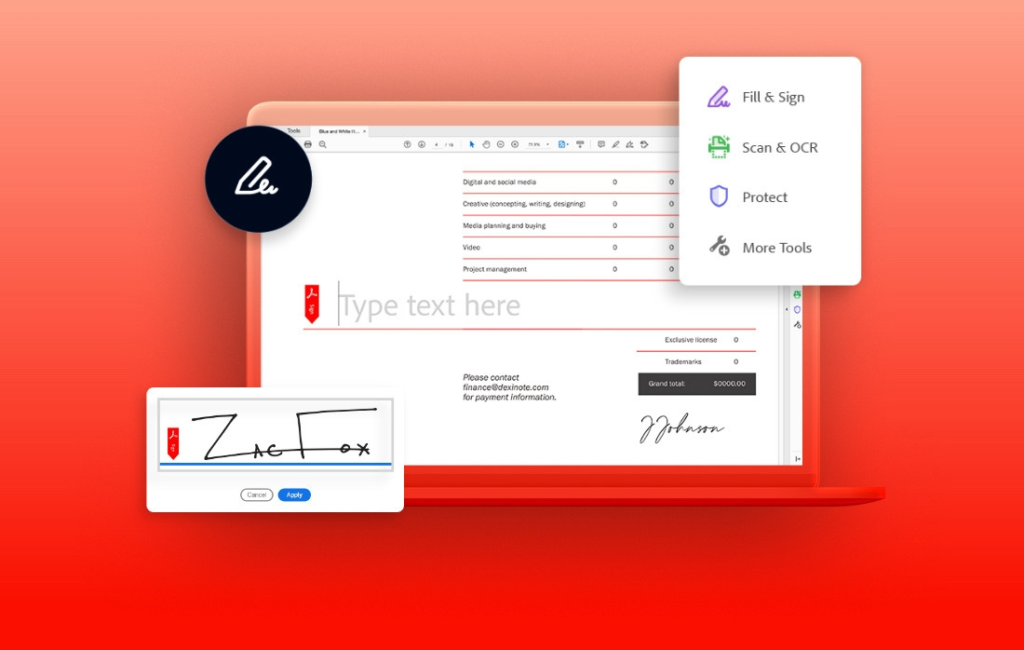
In today’s fast-paced digital world, efficient document management is crucial for businesses and individuals alike. Adobe Acrobat has emerged as a powerful tool that offers a comprehensive solution for creating, editing, and managing documents in various formats. From its humble beginnings as a simple PDF viewer, Adobe Acrobat has evolved into a feature-rich software suite that plays a vital role in simplifying our interactions with digital documents.
Table of Contents
- Introduction
- Evolution of Adobe Acrobat
- Key Features and Functionalities
- Creating and Editing PDFs
- Collaborative Workflows
- Enhanced Security Measures
- Mobile Accessibility
- Integration Capabilities
- Optical Character Recognition (OCR)
- Streamlining Business Processes
- Efficient Educational Tools
- Sustainability and Environmental Impact
- Future Trends and Innovations
- Conclusion
Introduction
In the realm of digital documentation, Adobe Acrobat has solidified its reputation as a game-changing software. This article delves into the evolution, features, benefits, and impacts of Adobe Acrobat in revolutionizing the way we manage documents.
Evolution of Adobe Acrobat
Adobe Acrobat’s journey began in 1993 when Adobe Systems introduced the Portable Document Format (PDF). Originally designed as a way to preserve the visual integrity of documents across different devices and operating systems, PDFs quickly became a standard for sharing and archiving files. Over time, Adobe Acrobat transformed from a PDF viewer into a versatile suite of tools for creating, editing, and organizing documents.
Key Features and Functionalities
Creating and Editing PDFs
Adobe Acrobat offers a user-friendly platform for creating and editing PDFs. Users can convert various file formats into PDFs, retaining fonts, formatting, and layouts. The software provides intuitive editing options, enabling users to modify text, images, and even entire pages within a PDF.
Collaborative Workflows
Collaboration is made seamless through Adobe Acrobat’s cloud-based features. Multiple users can review and edit the same document simultaneously, with real-time changes reflected instantaneously. Commenting and markup tools facilitate effective communication within teams.
Enhanced Security Measures
Security is paramount in the digital age, and Adobe Acrobat addresses this with robust encryption, password protection, and digital signature capabilities. It ensures that sensitive information remains confidential and tamper-proof.
Mobile Accessibility
With the proliferation of smartphones and tablets, Adobe Acrobat’s mobile app enables users to access, view, and edit PDFs on the go. This flexibility is especially valuable for professionals who need to stay productive while away from their desks.
Integration Capabilities
Adobe Acrobat seamlessly integrates with other software tools, enhancing efficiency in various workflows. Integration with popular applications like Microsoft Office streamlines document creation and editing.
Optical Character Recognition (OCR)
Adobe Acrobat incorporates OCR technology, enabling users to convert scanned documents into searchable and editable text. This feature proves invaluable for digitizing paper documents and extracting information from them.
Streamlining Business Processes
For businesses, Adobe Acrobat offers solutions that optimize various processes. From contract management to form digitization, the software accelerates workflows and reduces the reliance on physical documents.
Efficient Educational Tools
Educators and students benefit from Adobe Acrobat’s interactive features. E-books, presentations, and study materials can be enhanced with multimedia elements, fostering more engaging and effective learning experiences.
Sustainability and Environmental Impact
The transition from paper to digital documents has a positive environmental impact. Adobe Acrobat’s role in reducing paper consumption and promoting electronic documentation aligns with sustainability efforts.
Future Trends and Innovations
As technology advances, Adobe Acrobat continues to evolve. Predictive analytics, AI-driven enhancements, and further integrations are on the horizon, promising even more streamlined document management.
Conclusion
Adobe Acrobat has undoubtedly redefined how we manage documents in the digital age. From its origins as a PDF viewer to its current status as a multifunctional document management suite, it has proven indispensable for individuals and businesses seeking efficiency, security, and collaboration.
